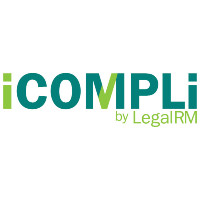 By Legal Futures Associate iCompli
By Legal Futures Associate iCompli
In the first blog on this topic, we ran through the challenges law firms face as the custodians of perhaps many thousands of original documents. Typically, these are wills or real estate documents that must be preserved in perpetuity and produced as required.
They’re irreplaceable and of high value. Losing them risks the firm’s reputation, malpractice suits and a breach of professional ethics. As such, best practice information governance dictates that firms should take an inventory on a regular basis. Unfortunately, that’s easier said than done. Using today’s barcoding technology, it requires the physical scanning of each barcode. This is a laborious task that can take several months to complete if thousands of files must be individually handled. In the last blog we introduced the idea of using RFID technology instead for this unavoidable chore. This is how it works.
The advantages of RFID
RFID tags are miniscule chips containing unique information that can be read remotely by RFID readers. The readers use radio waves to transmit signals that “wake-up” tags which then send a radio wave back.
RFID tags are everywhere. They keep tabs on livestock, vehicles, and people: for instance, they’re used to track and accurately time marathon runners. They’re used in healthcare, manufacturing and retail sales: for example, they’re often attached to wine bottles to track their journey from bottle plant to supermarket. And they’re used widely in cargo and supply chain logistics for asset tracking and inventory control.
This ubiquity is possible because tags are inexpensive – the tags we use cost less than 20p each. Also, RFID systems have become flexible, particularly because RFID readers can now be handheld. Older systems relied on tags passing through an RFID enabled portal. That’s no longer the case.
Also, tag reading is extremely quick. We use handheld readers that locate tags in less than 100th of a millisecond – without requiring direct line of sight. This makes all the difference to law firms needing to keep track of high value documentation.
Straightforward adoption
The adoption of RFID is straightforward for firms. The first step is to conduct an inventory in the usual way, but this time attaching RFID tags to all necessary files. Then you simply scan the barcode and the RFID tag consecutively. The barcode data is sent by Bluetooth to your device, be it a smart phone, laptop, tablet or desktop. Software then automatically compiles an RFID inventory for future use.
Subsequent inventories are quick and easy. You activate the reader in the proximity of the tags, noting that our system has an effective operational range of up to 30 yards, and can work through glass and wood (but not metal). Because of the speed at which RFID works, one client has found it possible to cut the three-month task of checking c. 40,000 folders down to less than an hour.
If a document can’t be found, you must make an educated guess as to where it might be and then activate the reader in that location. Another advantage of RFID is you don’t even need to disturb piles of paper on someone’s desk – though metal filing cabinet doors should be opened if required. Through its speed, cost-effectiveness and flexibility, RFID can enable your firm to conduct quick, reliable and frequent document inventories. It makes a great deal of sense for managing critical physical documents.
To find out more about how advances in Radio Frequency Identification (RFID) technology can offer a highly effective, time saving way to keep track of vital pieces of paper join our ILTA Product Briefing where Chris Giles from LegalRM will demonstrate how iCompli can efficiently safeguard your firms documents. Click here to register.










